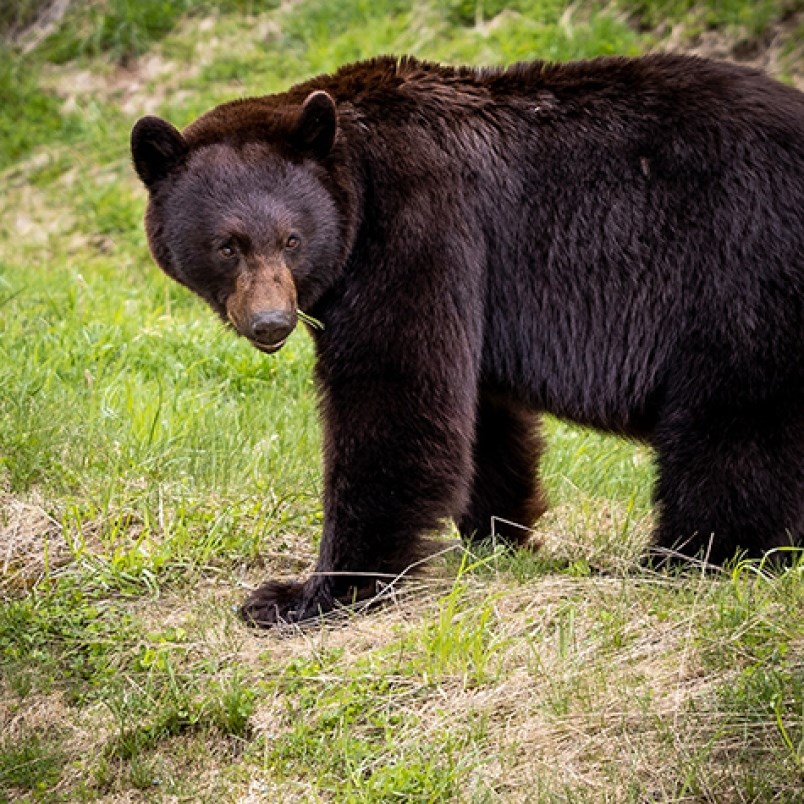The potential for human bear conflict is high in Port Coquitlam because of its abundance of parks and trails, which provide food, safe cover and easy mobility for bruins travelling from the mountains to the rivers, according to a city hazard assessment.
And schools are among the highest risk because they are often close to natural areas, have bushes and shrubs near unfenced play areas — some with berries that bears love to eat — and have garbage cans or dumpsters that bears can easily get into, the assessment reads.
“Dumpsters located at schools were observed to be unlocked and unsecured during site visits. This alone did not contribute toward their hazard rating, however, because most can be properly secured if staff are vigilant about locking the dumpsters after each use,” the report states.
(For the full report, see council agenda here.)
The 10 high hazard schools are:
• BC Christian Academy (Private)
• Birchland elementary
• Castle Park elementary
• Cedar Drive elementary
• Central Community elementary
• Irvine elementary
• Kilmer elementary
• Hazel Trembath elementary
• Minnekhada middle school
• Westwood elementary school
Moderate hazard schools are:
• Blakeburn elementary
• Citadel middle school
• Coquitlam River middle school
• Ecole des Pionners-de-Maillardville (francophone)
• Mary Hill elementary
• Riverside secondary
• James Park elementary
• Our Lady of the Assumption (private)
Low hazard schools are:
• Archbishop Carney secondary
• Pitt River elementary
• Hope Llutheran (Private)
• Terry Fox secondary
And while PoCo was congratulated for having a long-standing program to educate people about bears and provide them with bear-resistant locks for their garbage carts, many of the city’s own bins are open to bears — especially in the downtown core — and that could send “mixed messages” to residents and homeowners that are expected to lock up their own waste.
RESTAURANT GREASE PITS, CP RAIL GRAIN SPILLAGE ISSUES TO WATCH: REPORT
Other problem areas were businesses that leave their grease pits open, and CP Rail where grain spills can attract bears. Farms with berries and livestock were also noted as attractive to omnivore bears seeking easy calories.
Still, residents were also cited for leaving their garbage unsecured, including residents of multi-residential properties where dumpsters are left unlocked or use cans that are easily “penetrated by bears.”
In one instance, the report noted, a can at Meridian Village had teeth marks on it from bears trying to get inside.
It’s been more than a year since Port Coquitlam started on the road to becoming a Bear Smart community since several bears had to be shot near Fox Park in December, 2019, when two bear families didn’t retreat into dens to hibernate, showed no fear of humans and were breaking into buildings.
On Tuesday (May 26), Port Coquitlam council will review a detailed plan for becoming a “Bear Smart” community, including dozens of recommendations to reduce risks at schools, parks, homes and businesses.
If approved, the city will spend $25,000 to figure out how to turn the recommendations into action to reduce potential conflicts, which — in the last five years — has resulted in thousands of calls and 26 bear deaths.
According to the report, garbage is the type of attractant that is most often identified when callers report bear sightings to the Report All Poachers and Polluters (RAPP) hotline.
It recommends bear-resistant garbage cans and locked dumpsters in all areas of the city including at schools — 10 of which were declared “high” hazard for potential bear conflict. Nine schools had a moderate hazard rating, with just three declared a low hazard for attracting bears.
Factors that were determined to increase the hazard rating in schools include:
• dumpsters with plastic lids
• play areas close to bear habitat or attractants, especially where sight-lines are poor (unless adequate fencing is in place to discourage bears from entering the area)
• schools that have attractants located nearby that cause bears to cross school property to reach.




